Physics Applied Skills Role 4: Drawing graphs and lines of all-time fit
In function 4 of the Physics Skills Guide, we explain how to draw a line of all-time fit correctly in Physics Practicals. Read the post to learn nearly dos and don'ts of cartoon a line of best fit.
Introduction to Drawing Graphs and Lines of Best Fit
In this Guide, we explain the importance of scientific graphs in Physics and how to draw scientific graphs correctly including lines of best fit. This is a really important Physics skill and you'll demand to master information technology if you want to ace your adjacent Physics Practical test.
Want to ace your side by side Physics Practical Assessment?
Download the Matrix Practical Skills Workbook and sharpen your Physics skills. Acquire how to:
- Assess the validity, reliability and accurateness of any measurements and calculations
- Determine the sources of systematic and random errors
- Identify and apply appropriate mathematical formulae and concepts
- Describe appropriate graphs to convey relationships
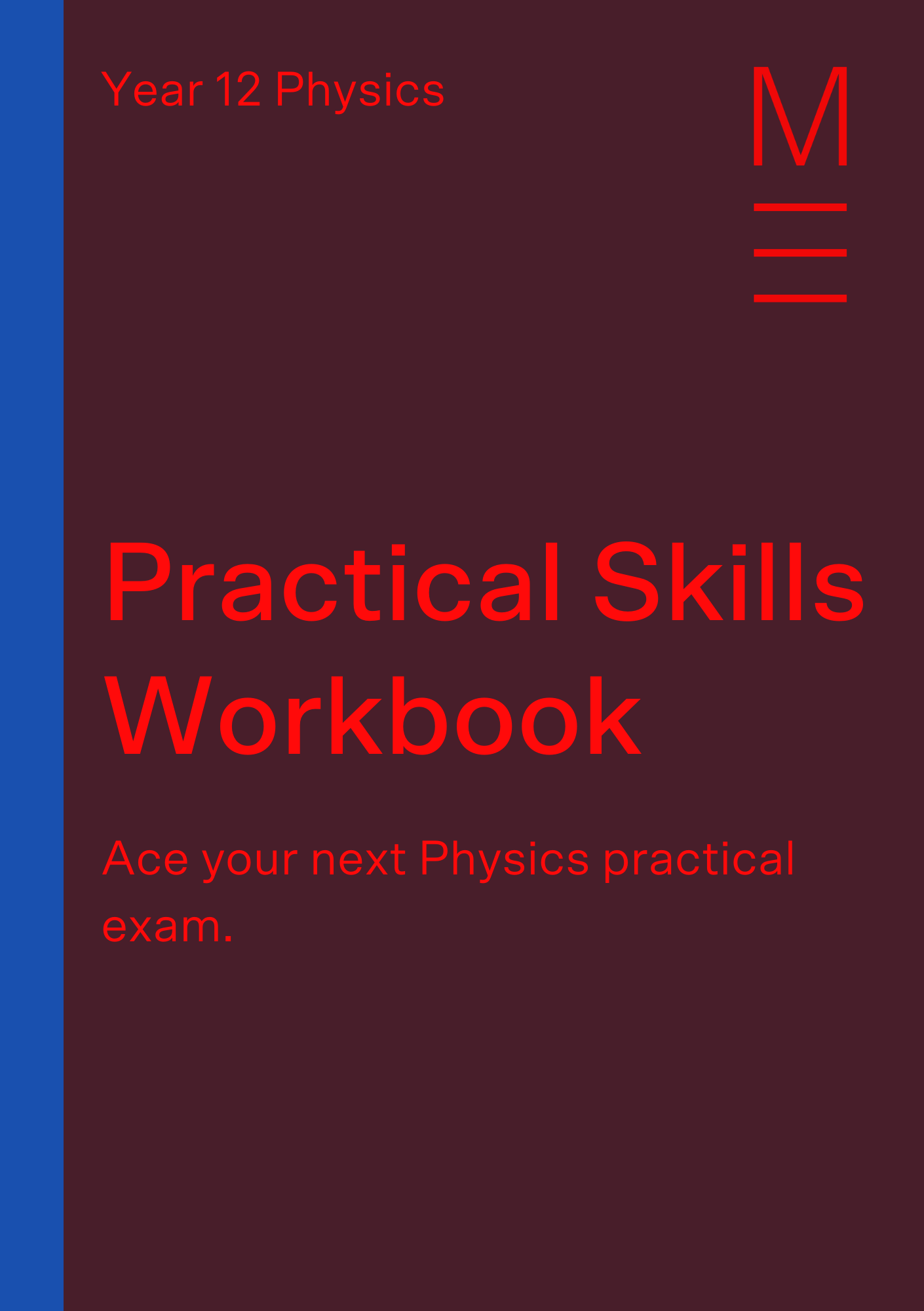
Sharpen your Physics skills
Get exam-ready for your Physics practical assessments with this complimentary prac skills workbook.
Your workbook is on the style! Check your e-mail for the downloadable link. (Delight allow a few minutes for your download to country in your inbox)
DOWNLOAD YOUR Gratuitous PHYSICS WORKBOOK
Want to ace your next Physics Practical Assessment?
Download the Matrix Practical Skills Workbook and acuminate your Physics skills. Acquire how to:
- Assess the validity, reliability and accuracy of any measurements and calculations
- Determine the sources of systematic and random errors
- Identify and apply appropriate mathematical formulae and concepts
- Draw appropriate graphs to convey relationships
In this article nosotros discuss:
- Scientific graphs
- Drawing the line of best fit
- Common mistakes with drawing lines of best fit
Scientific Graphs
What are scientific graphs?
A graph is a visual representation of a relationship between two variables, x (the independent variable) and y (the dependent variable).
Graphs make information technology piece of cake to identify trends in information that you take collected and tin can exist analysed in order to perform a adding or a measurement, related to addressing the aim of an experiment.
How to draw a scientific graph
| Stride | Activeness | Detail |
| 1 | Identify the variables |
|
| two | Decide the variable range |
|
| 3 | Determine the scale of the graph |
|
| 4 | Number and label each axis |
|
| 5 | Plot the data points |
|
| half dozen | Draw the graph |
|
| seven | Provide a descriptive title |
|
In Year xi and 12 Physics, the trends that y'all will investigate are mostly linear, or can be converted into linear graphs, and, hence, yous'll be required to draw a line of best fit.
Drawing the line of best fit
An case of a correctly drawn line of all-time fit is shown beneath, along with an incorrect 1:
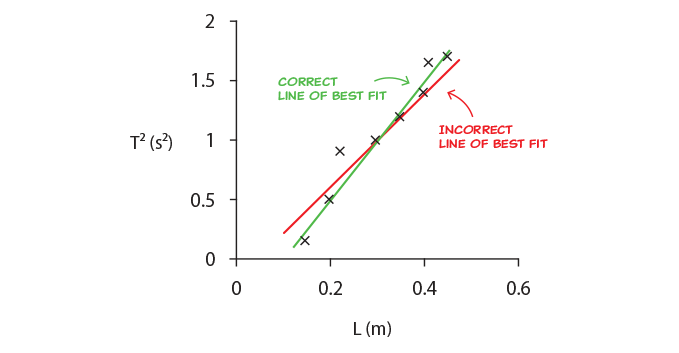
How to describe a line of best fit
To describe the line of best fit, consider the post-obit:
- Outliers must exist ignored.
- The line must reverberate the trend in the data, i.e. it must line up all-time with the majority of the data, and less with data points that differ from the majority.
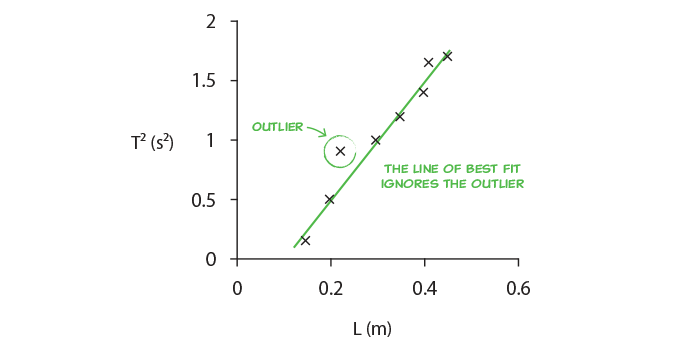
- The line must be counterbalanced, i.due east. information technology should have points to a higher place and below the line at both ends of the line.
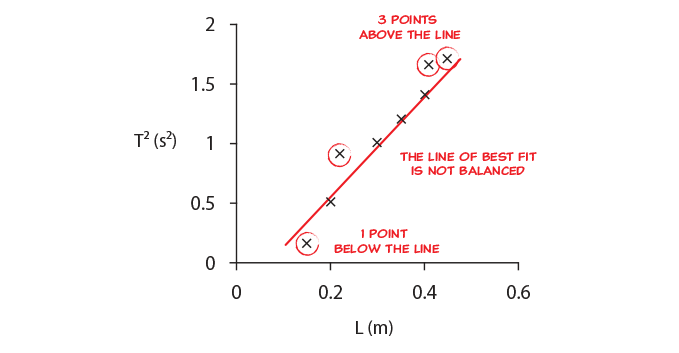
- Do Non forcefulness the line to laissez passer through whatsoever specific data points, or to laissez passer through zero. The purpose of the line of best fit is to reveal the trend of all the data.
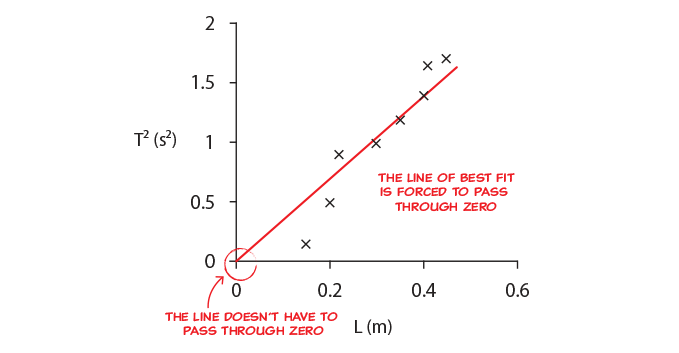
Why practice we need to describe a line of best fit?
The main reasons for drawing a line of best fit are to:
- Reduce the effect of both systematic and random error and thus make the experiment more accurate and more reliable.
- Find and use the gradient of the line of best fit to determine an unknown in the experiment. Normally determining this unknown addresses the aim in some fashion
How does the line of best fit reduce experimental errors?
By drawing the line of best fit we are looking for the strongest tendency in the information, and in this mode reduce the upshot of random errors. If we and so use the slope of the line of best fit nosotros look at differences in values rather than absolute values, which reduces or eliminates the effect of systematic errors.
The graphs below illustrate four examples with dissimilar types of errors and with no errors:
- Perfect data with no errors
- Random error
- Random mistake with outlier
- Random and systematic errors
The gradient represents the event of the experiment and should have a value of 1, then the equation of the line is \(y=ten\).
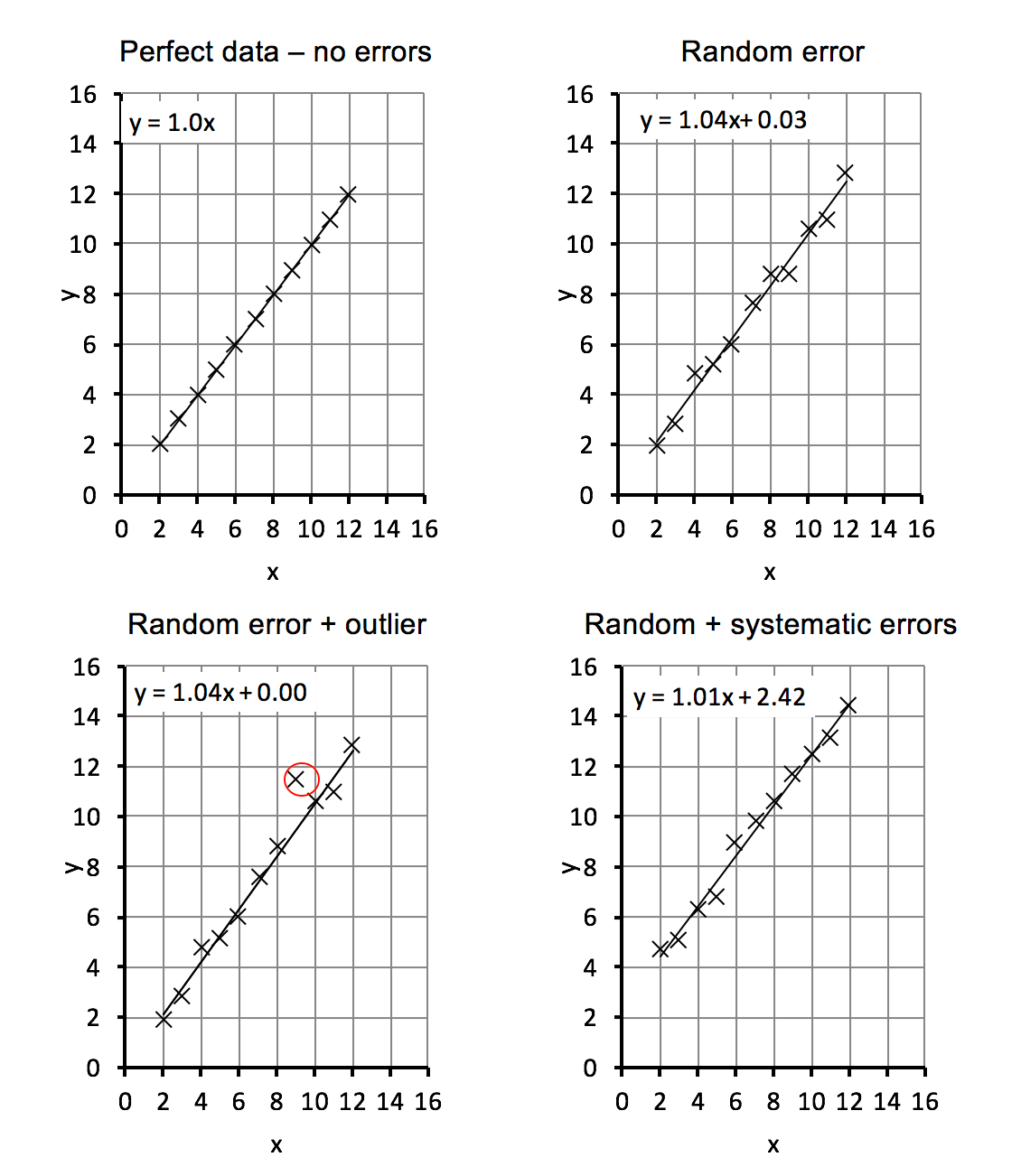
How does using a line of best fit reduce experimental errors?
Using a graph gives results that are as good or amend than calculating from the data points directly and then averaging, equally shown in the table below.
| Types of error present | Issue obtained from the gradient of a line of best fit | Result obtained from computing using all information points and averaging them |
| Perfect information – no errors | ane.00 | i.00 |
| Random error | 1.04 | 1.04 |
| Random fault with outlier | 1.04 | 1.07 |
| Random and systematic errors | one.01 | 1.47 |
From the table, we can run across that:
- The perfect data has a slope of ane.
- The random fault gives a gradient is one.04, still very close to the correct value of i.
- The outlier is ignored past the line of all-time fit, so the slope is still 1.04, shut to the correct value. Averaging over the data points would non ignore the outlier and would give a worse result of one.07.
- The systematic error shifts up the information by the same amount but does non alter the gradient, which is withal 1.01. This is withal very close to the correct value of 1.However, averaging over the points, in this case, gives an incorrect answer of 1.47.
Common mistakes with cartoon lines of best fit
The instance below shows mutual mistakes by students when drawing lines of best fit. The exact mistakes the students have made are listed below.
Fault one: Missing labels
Graph one shown below is missing labels:
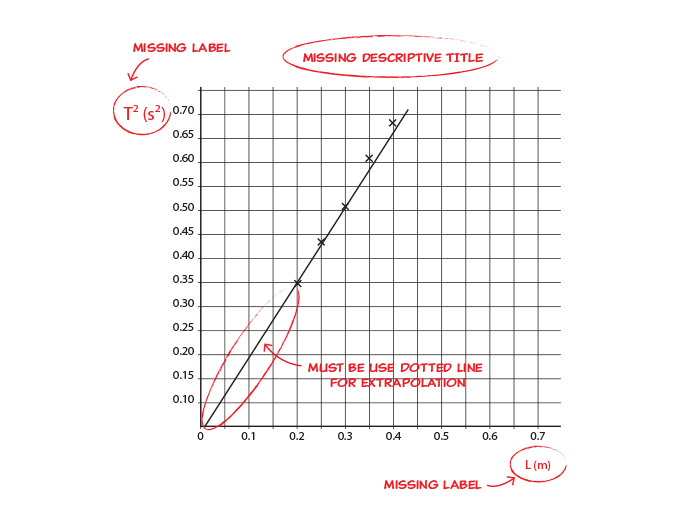
Mistakes in this graph include:
- Missing labels for the axes
- Missing descriptive championship
- The extrapolated line is not drawn using a dotted line
half-dozen Common Mistakes HSC Physics Students Brand in Exams
Error two: Incorrect calibration
Graph 2 shown below contains an wrong calibration:
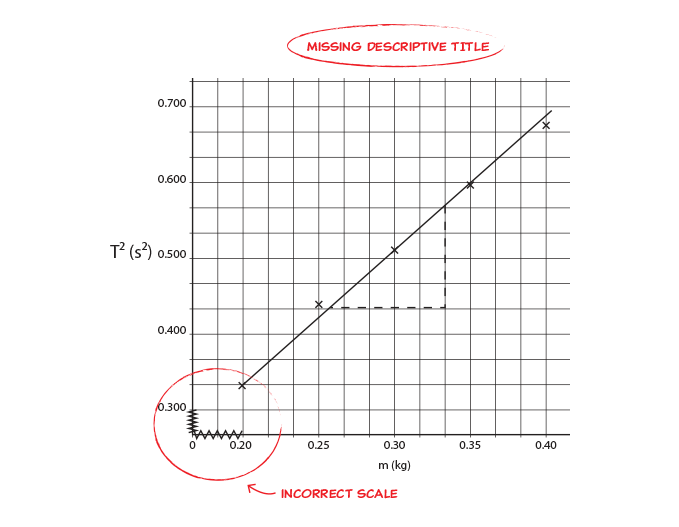
Mistakes in this graph include:
- Incorrect scale in x and y-axes. Each segmentation should represent the same value across each axis. For example, if each division is set up a value of 0.05 at the beginning of the graph for that axis, so one sectionalization should e'er represent 0.05 for that centrality.
- The student should either get-go the scale at 0 or at 0.20 on the x-axis.
© Matrix Education and world wide web.matrix.edu.au, 2022. Unauthorised use and/or duplication of this material without limited and written permission from this site's author and/or possessor is strictly prohibited. Excerpts and links may be used, provided that total and articulate credit is given to Matrix Education and www.matrix.edu.au with appropriate and specific direction to the original content.
DOWNLOAD HERE
How to Draw a Graph in Science TUTORIAL
Posted by: ericmereass.blogspot.com
Komentar
Posting Komentar